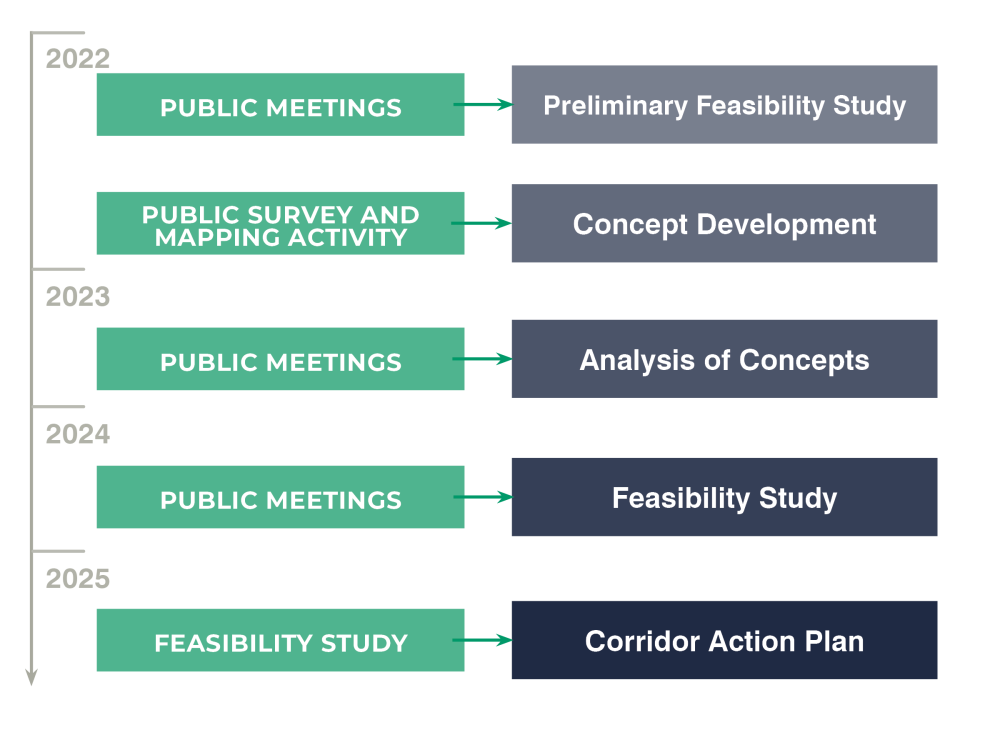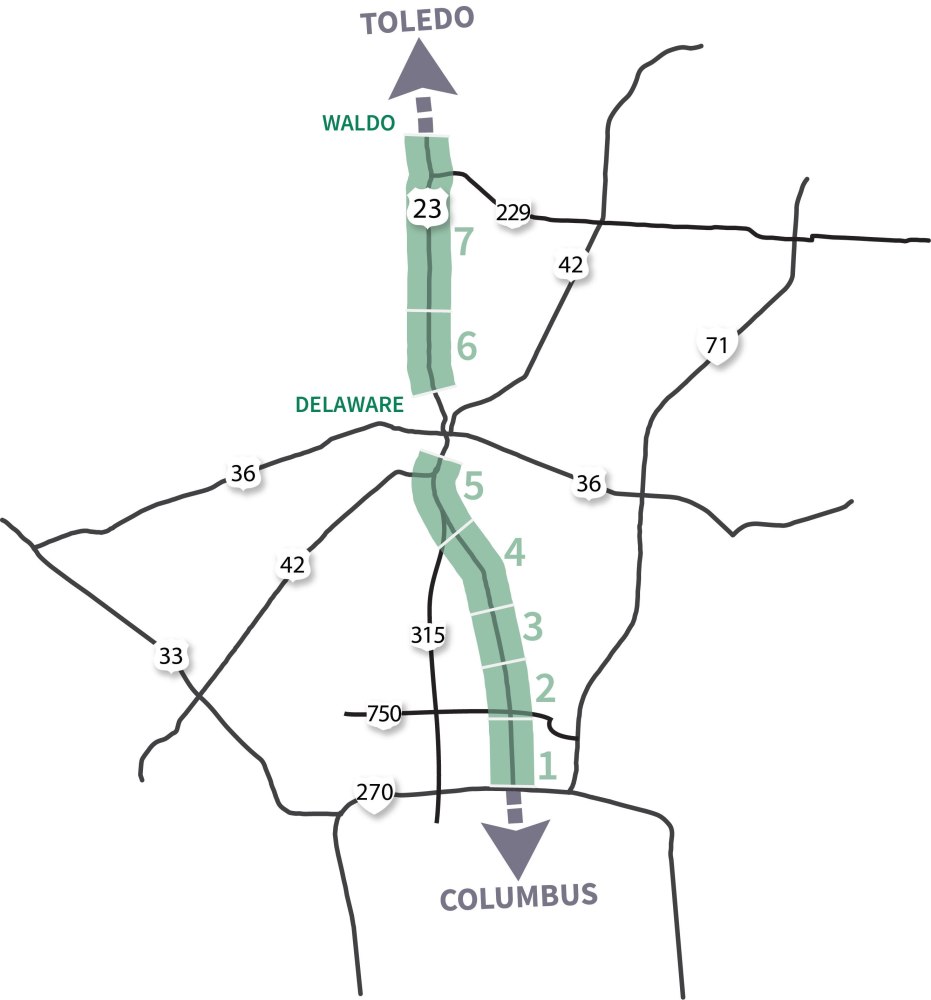Route 23 Connect (PID 112768)
Route 23 Connect (PID 112768)
The Ohio Department of Transportation, along with regional partners at the Mid-Ohio Regional Planning Commission and Toledo Metropolitan Area Council of Governments, have begun the Route 23 Connect Study to evaluate enhancements along the U.S. 23 corridor to improve safety and traffic flow between I-270 and Waldo.
Previous Public Meetings
ODOT hosted public meetings in August 2024. All the meeting information can be found in the "Documents" section.
Why is this study needed?
Route 23 already has 30% more traffic than the roadway was designed to accommodate, leading to increased congestion, unpredictable travel times, bottlenecks, and higher crash rates. This study will support Columbus as a national logistics hub by strengthening connection and access to northwest Ohio, Michigan, and Canada.
What is the process?
Route 23 Connect previously considered possible free-flow connections between Waldo and I-270. The cost, complexity, and environmental impact of the concepts presented in earlier were too high to pursue further so the study is shifting its focus toward identifying smaller-scale improvements.
Route 23 Connect is now focusing on improvements along the U.S. 23 corridor between I-270 and Waldo. This study has developed concepts which are being evaluated to guide a corridor action plan that will identify specific projects that can be advanced into project development. The study concepts range in size and scope, aiming to provide safer and more efficient travel, including improved travel time reliability for through traffic.
Click the "Public Involvement" tab for information about upcoming engagement opportunities. More details on the study are available on ODOT’s website at:
www.transportation.ohio.gov/23connect
A Fact Sheet of this project can be found in the Documents section of this website.
The environmental review, consultation, and other actions required by applicable Federal environmental law for these projects are being, or have been, carried out by ODOT pursuant to 23 U.S.C. 327 and a Memorandum of Understanding dated December 14, 2020, and executed by FHWA and ODOT.
DOCUMENTS
PublicInput Meeting Participant Guide
2025:
2024 Preliminary Feasibility Study
- Executive Summary
- Report
- Appendix A: Public Engagement Materials
- Appendix B: Highway Capacity Analysis Reports
- Appendix C: ECAT Reports
- Appendix D: Conflicting Movement Calculations
- Appendix E: Environmental Maps
- Appendix F: Delay Benefit Calculations
- Appendix G: Benefit-Cost Ratio Calculations
- Appendix H: Conceptual Cost Estimates
2024:
2024 Public Meeting Materials:
- Public Meeting Display Boards (2024)
- Public Meeting Concept Scrolls (2024)
- Public Meeting Handouts (2024)
- Public Meeting Detailed Evaluation Matrices (2024)
2024 Q&A Online Meeting Video:
2024 Q&A (Response to Summer 2024 Meeting Comments):
2023:
2023 Public Meeting Materials:
- Public Meeting Display Boards (2023)
- Public Meeting Concept Scrolls (2023)
- Public Meeting Handouts (2023)
- Public Meeting Video (2023)
- Fall 2023 Online Q&A Video (2023)
2024 Q&A (Response to Fall 2023 Meeting Comments):
2022:
2022 Preliminary Feasibility Study:
2022 Project Materials:
Study Area
For Questions, Contact:

